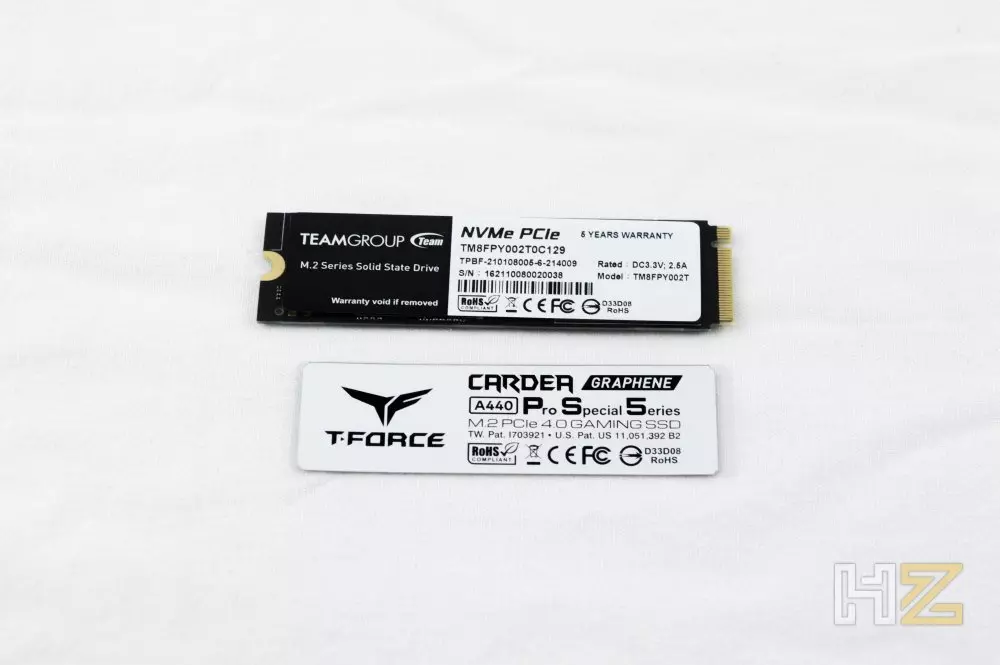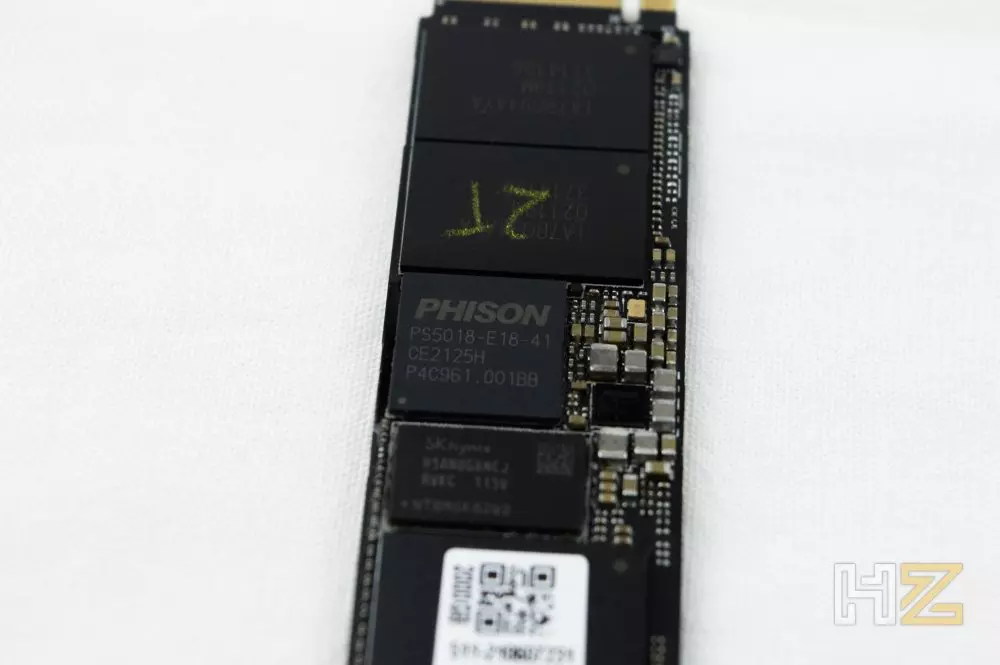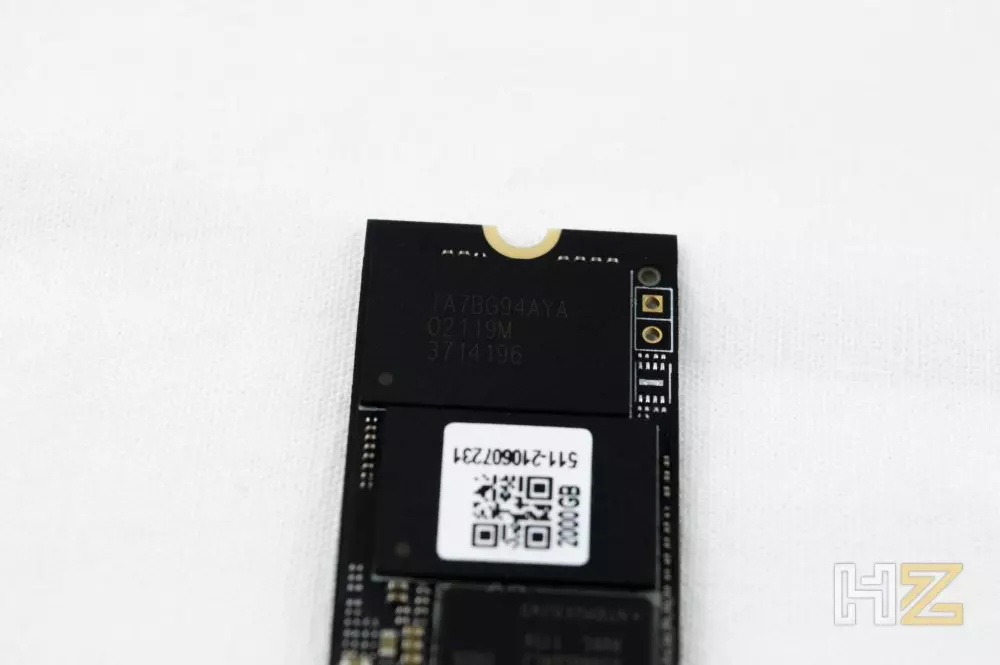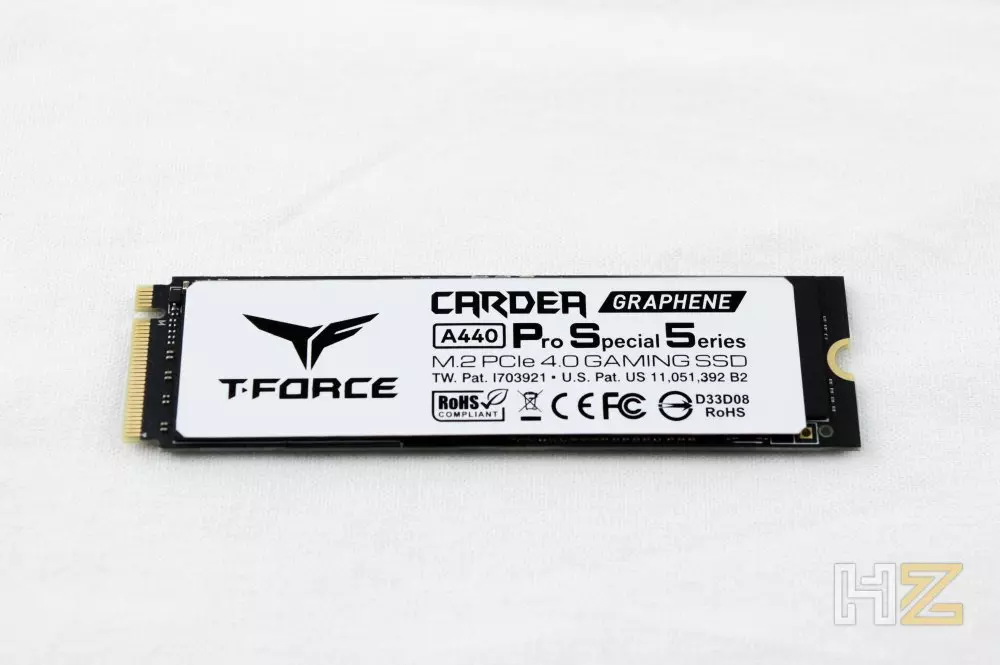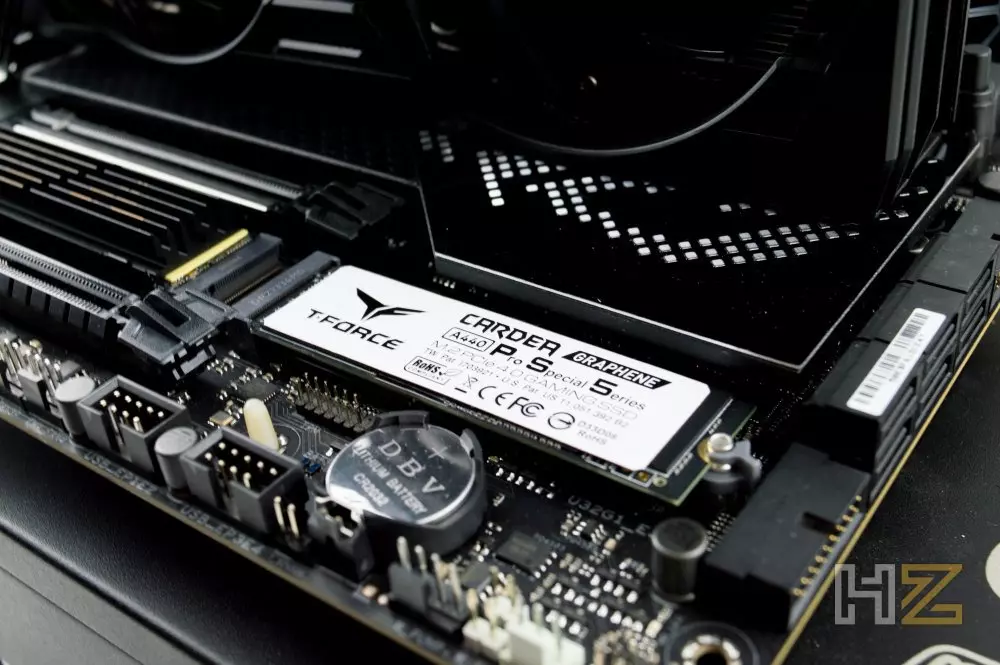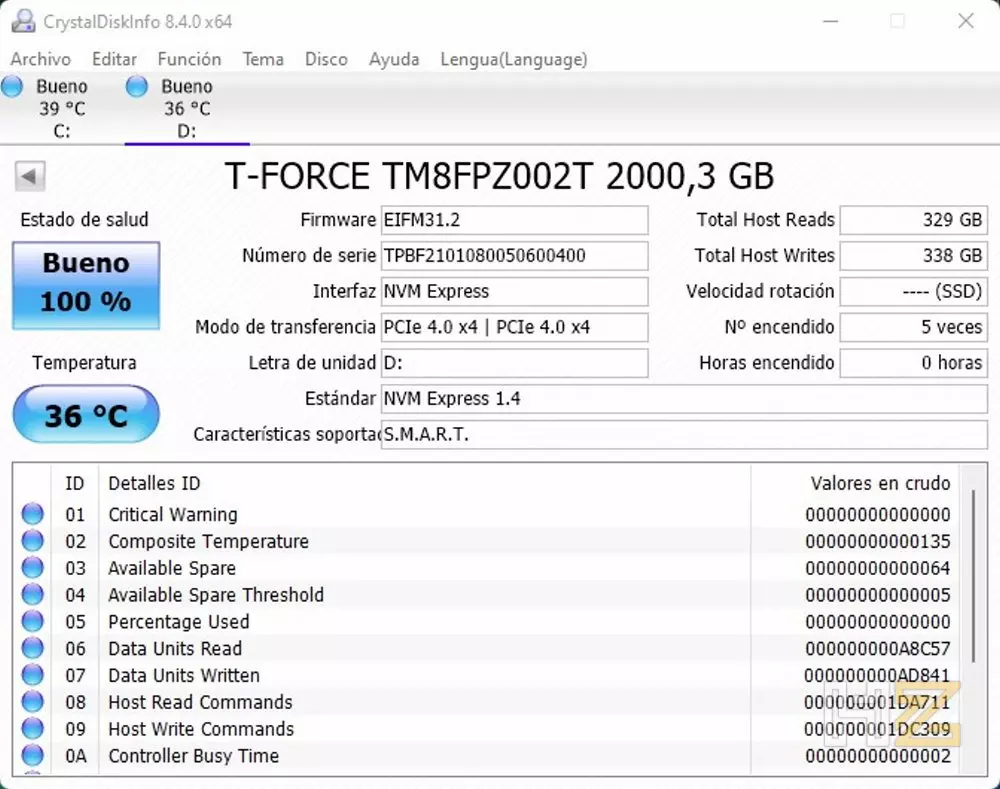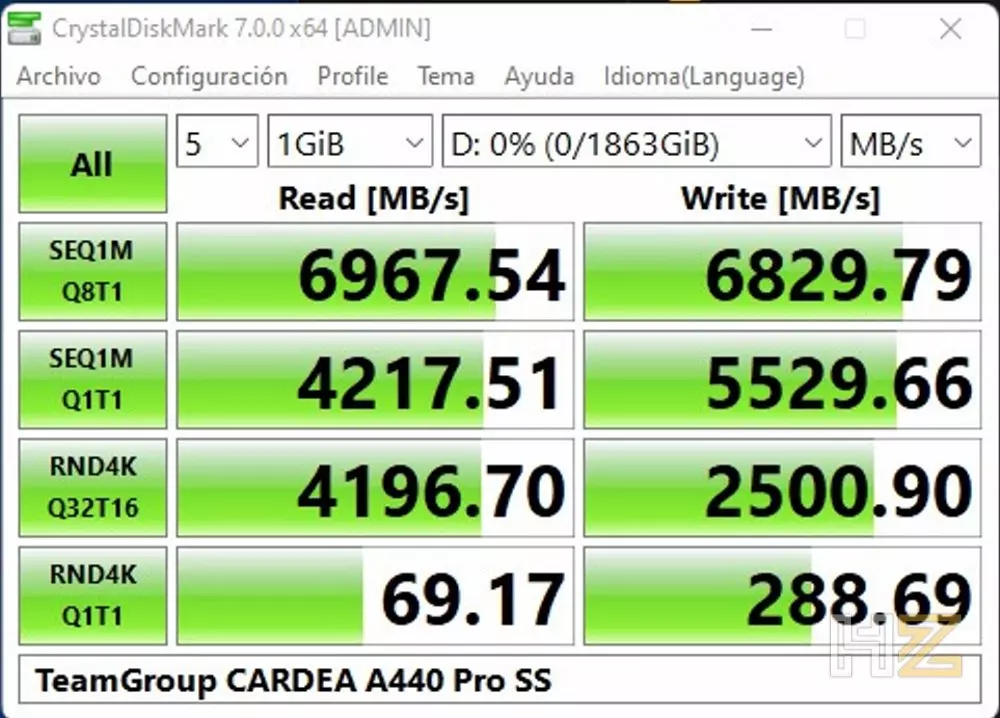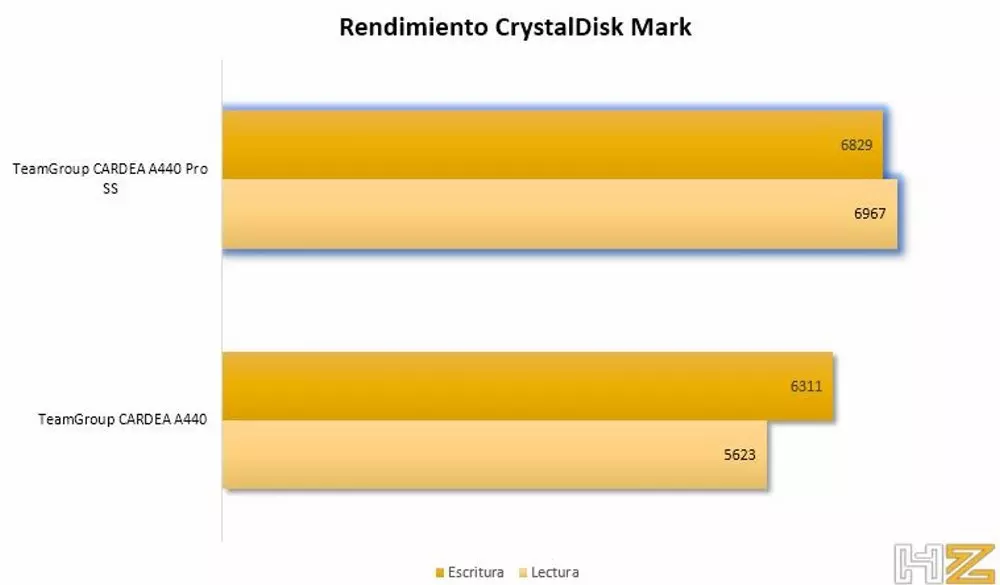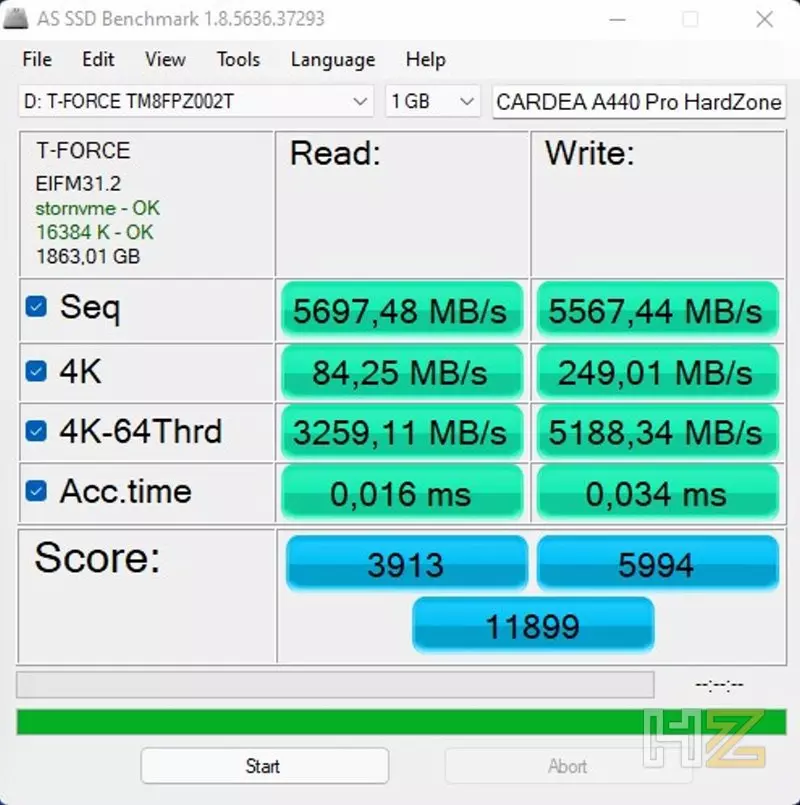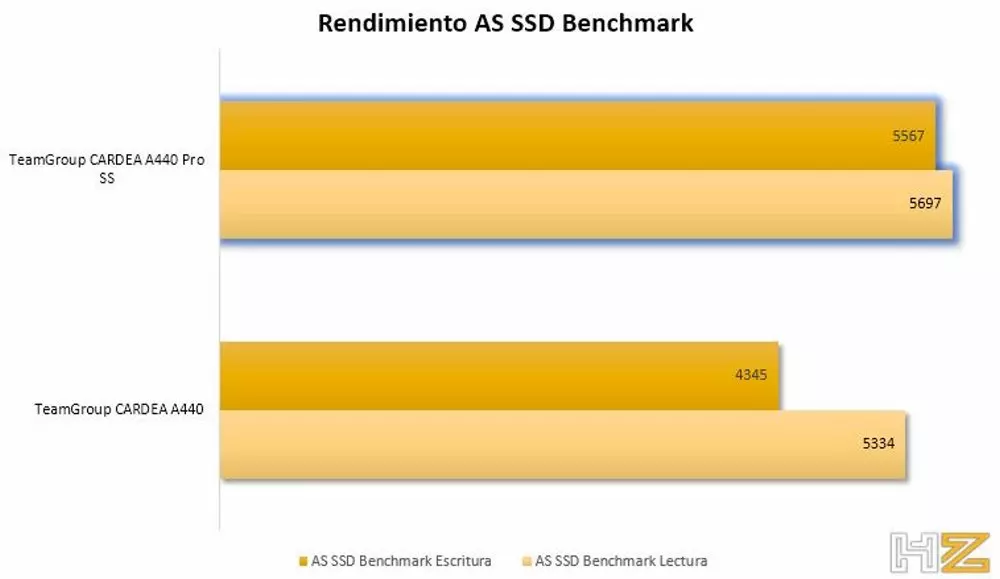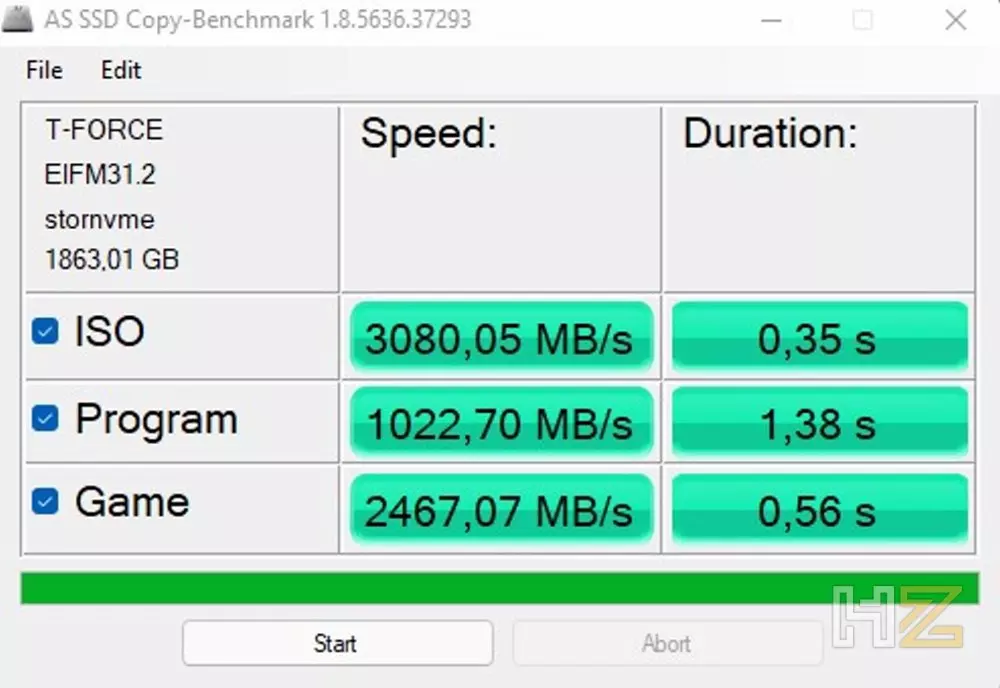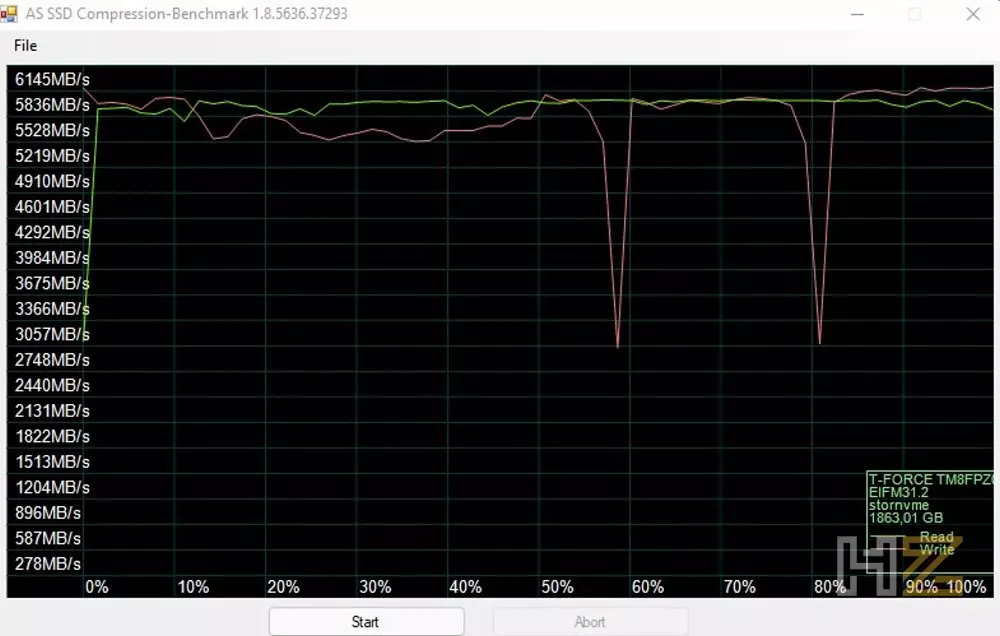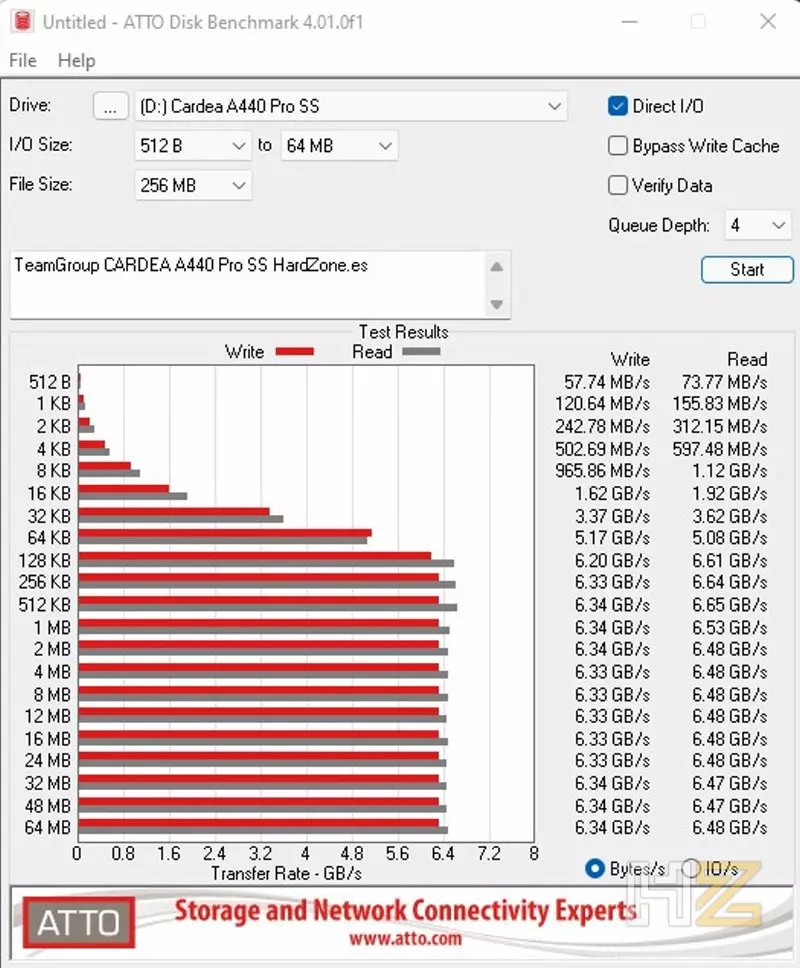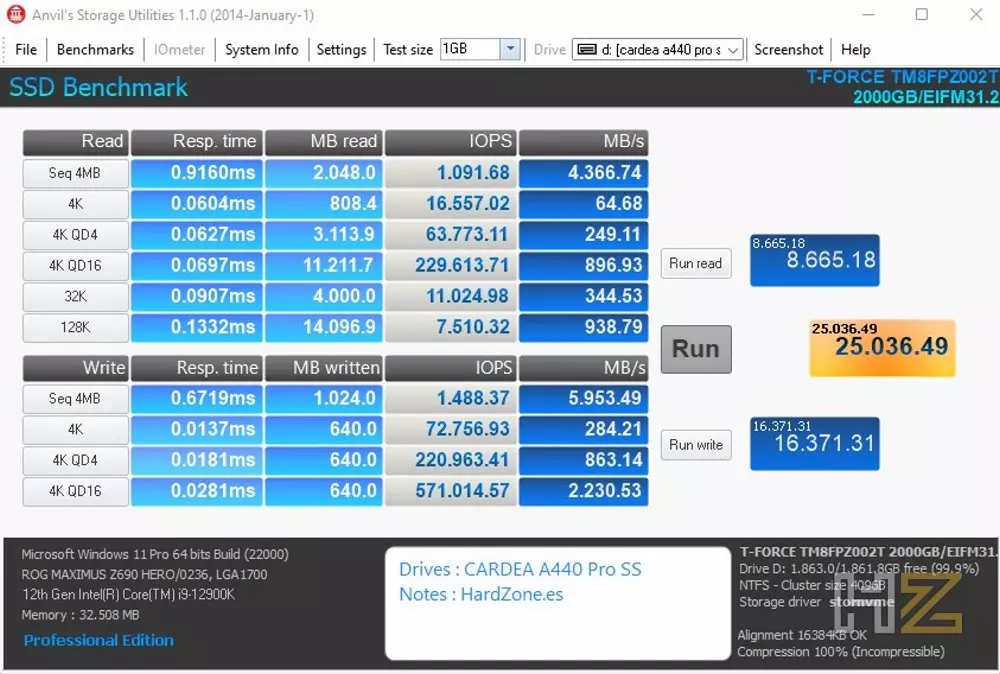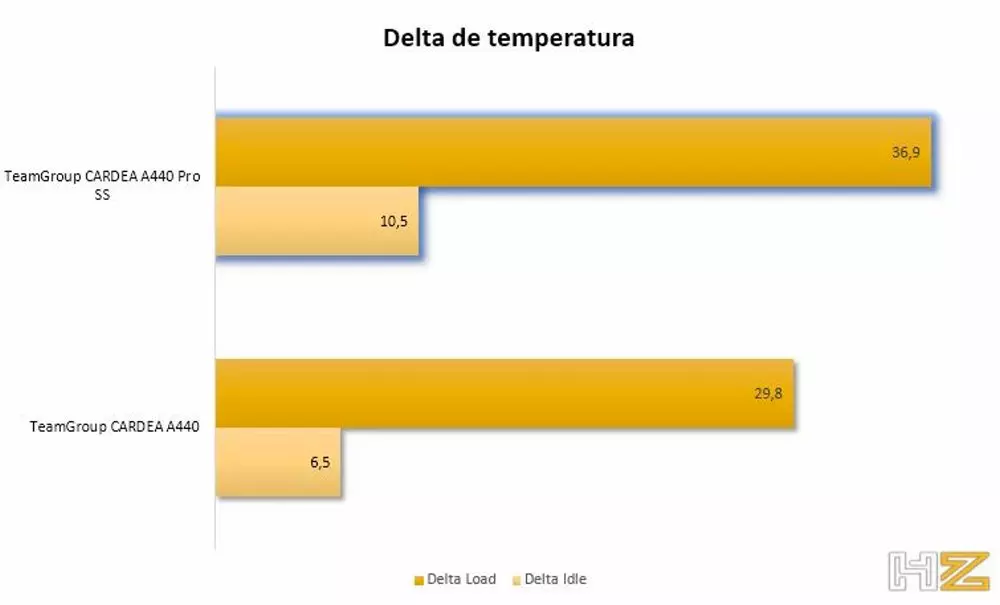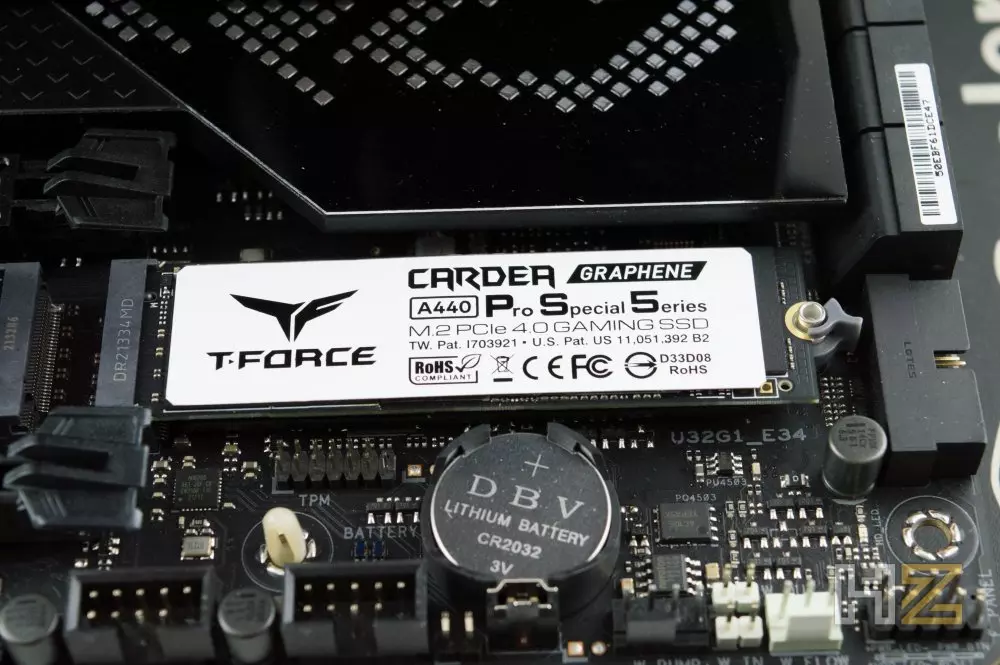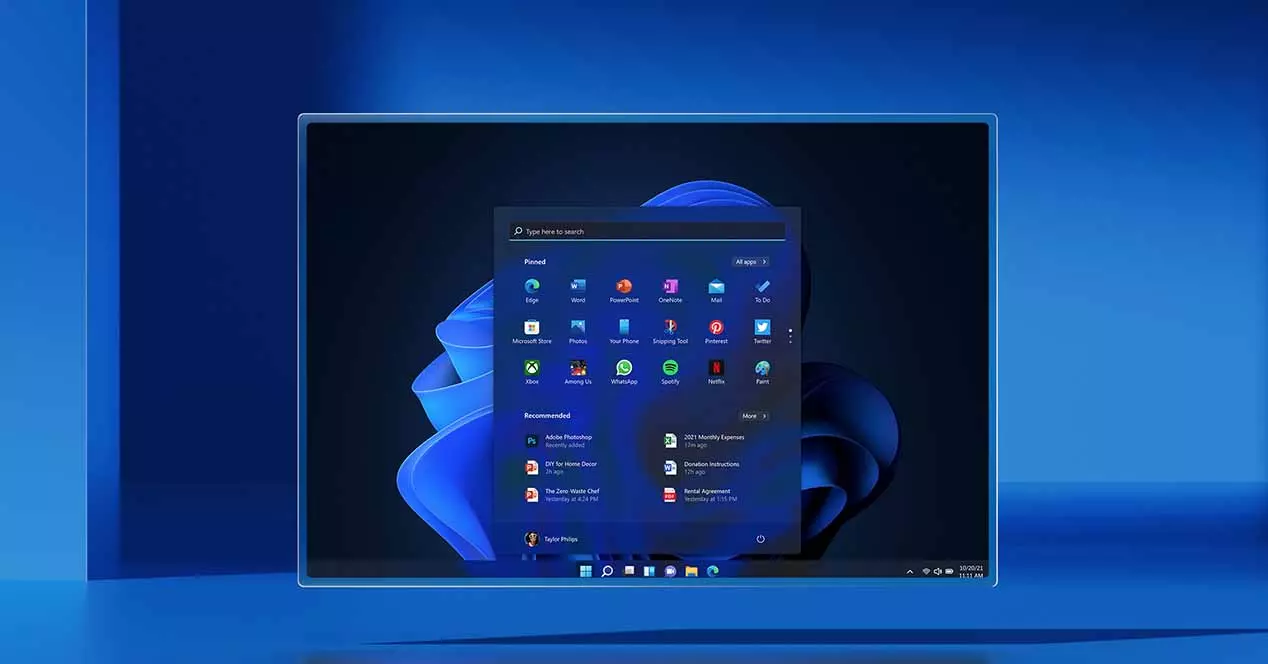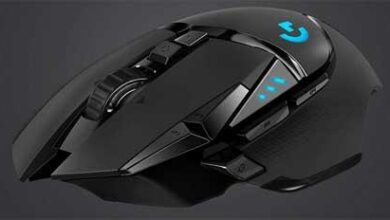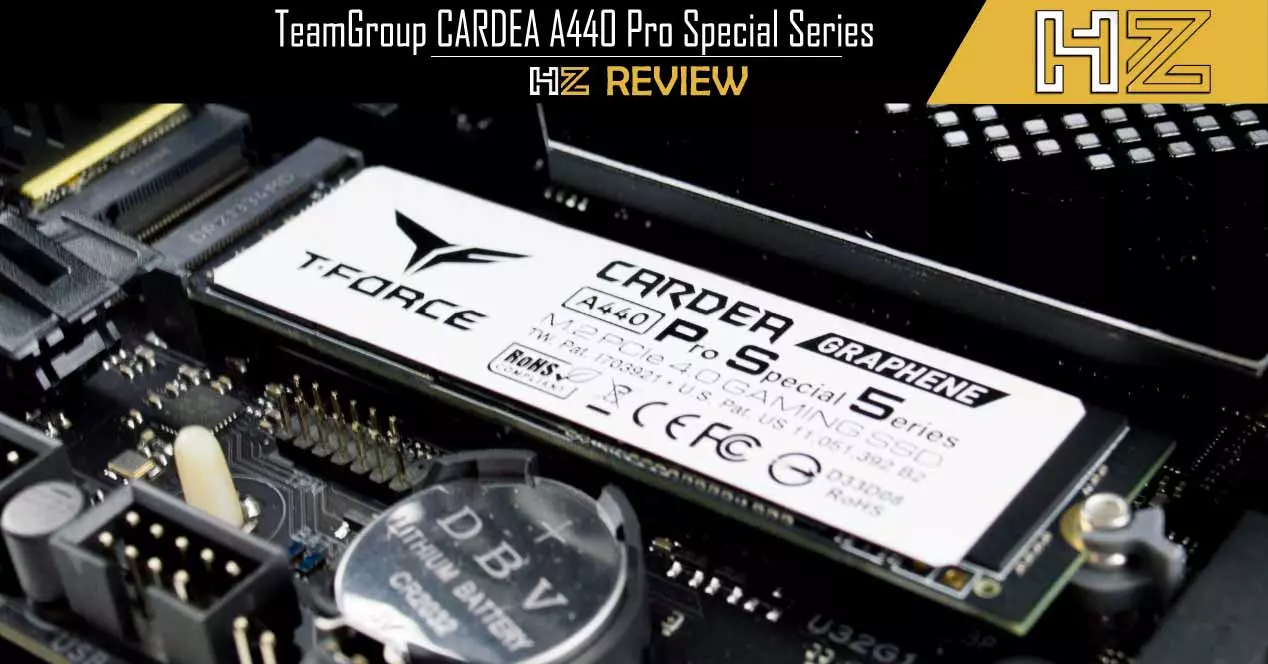
In this case, we are facing the A440 Pro Special Series, which instead of coming with two heatsinks like the normal A440 Pro, comes only with the Graphene heatsink which, in addition, is white instead of black to suit the aesthetics from the SONY PlayStation 5 console (even though the SSD is cloistered in the console and cannot be seen). This Graphene heatsink is extremely thin, which allows to install the SSD without problems in the PS5 (with the aluminum one we could not because it does not fit).
Beyond that, and since we are facing a solid state device in M.2 2280 format and with a PCIe 4.0 interface, it is ideal to use it also on PC and not only on the SONY console, since both on the latest platform From Intel as well as from AMD we can enjoy the maximum bandwidth that it is capable of offering, and it is precisely on PC where we are going to analyze it because that is where we are going to be able to measure its real performance.
Unboxing and external analysis
As is usual in this manufacturer, we find the SSD inside a soft cardboard box, on the front and back faces of which we find both images of the device, its name and its main characteristics. In this case, yes, the exterior of the box is in white tones accompanying the aesthetics of the SSD itself.
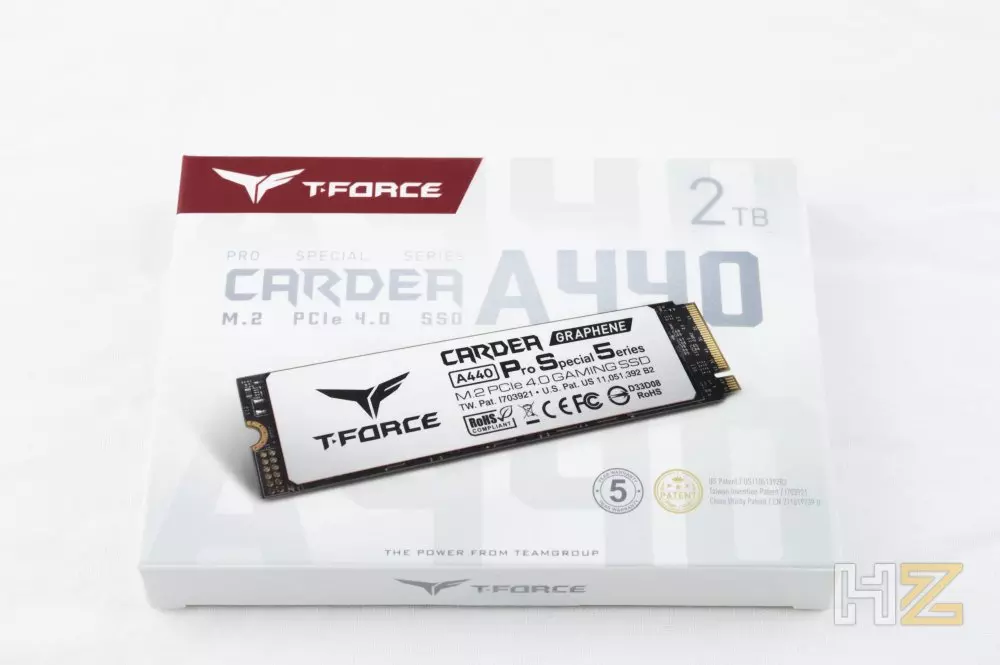
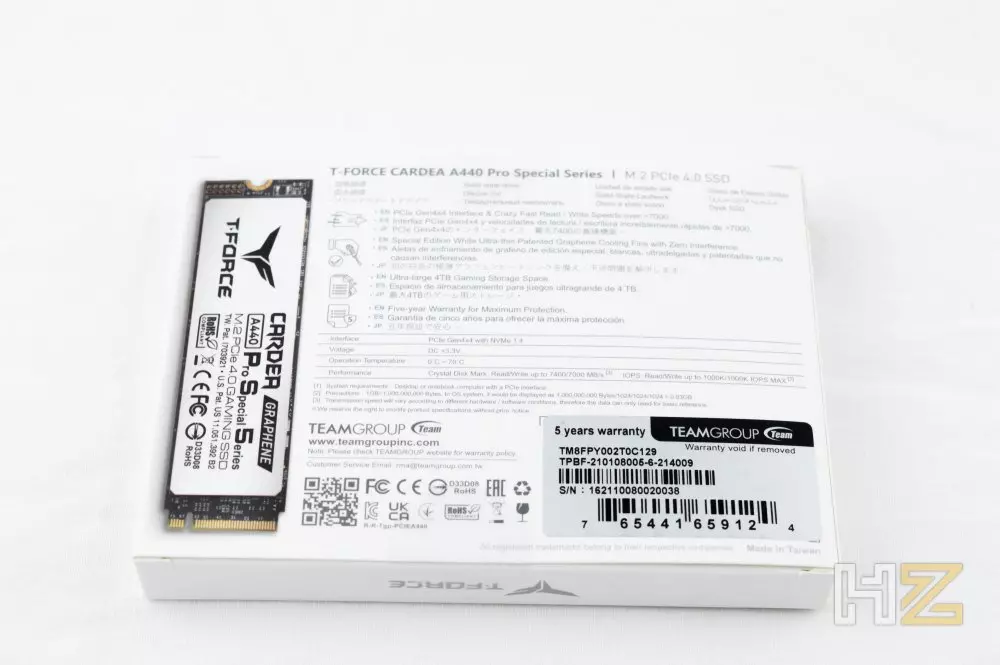
Inside we find a transparent plastic blister in which the SSD is cloistered, as well as its separate Graphene heatsink.
The Graphene heatsink is exactly the same as the one we have already seen in other models, such as the normal A440 and the A440 Pro, only in white. A thin transparent plastic sheet in the lower area covers an adhesive that will allow us to place it on top of the SSD; Why it is not installed at the factory is unknown to us, but it is good for us to be able to show you the chips that make up this SSD shortly.
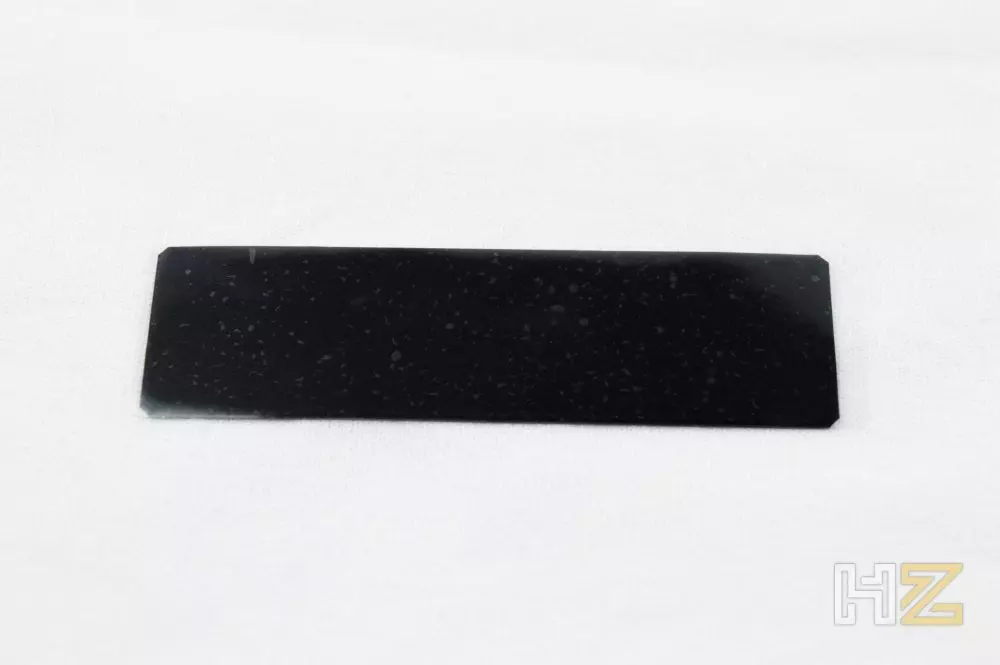
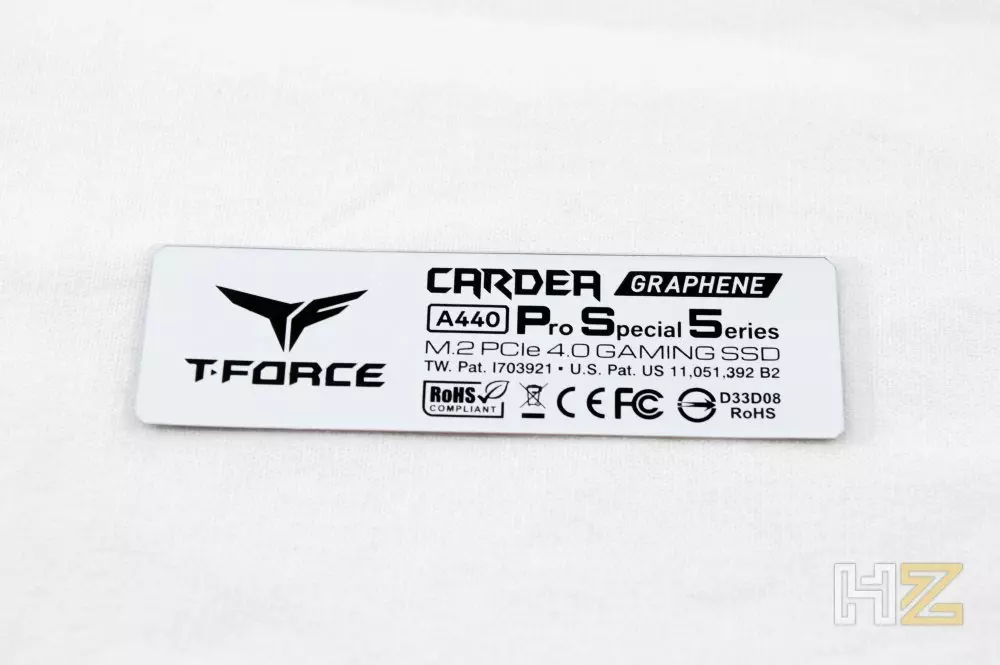
Here you have the TeamGroup CARDEA A440 Pro Special Series, which on one side does have a small identification label of the product. On the opposite side there is nothing, and it is precisely on this other side where we will have to install the Graphene dissipator that, as we have seen, comes apart.
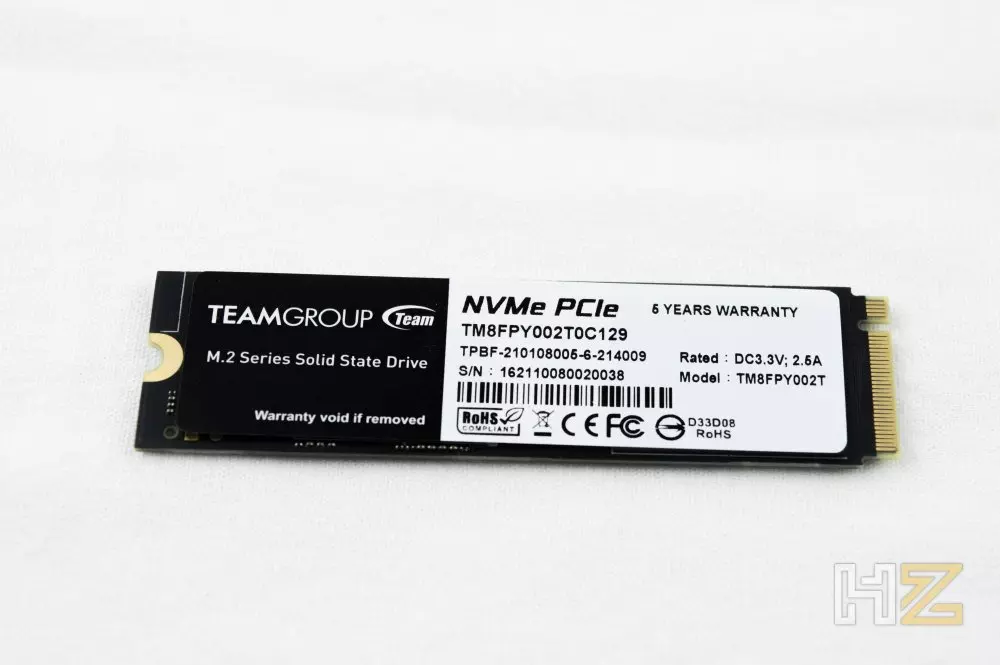

This solid state device uses a Phison PS5018-E18 controller that we have already seen in other PCIe 4.0 SSDs that exceed 7,000 MB / s, and it is a guarantee of good performance results already out of the box. In the following image you can see this controller, as well as the DRAM chip that in this case is signed by SK Hynix.
The model number (IA7BG94AYA) that we find on the memory chips tells us that they are manufactured by Micron, and also that they are 176-layer TLC of the very latest generation, which is why we have so much speed and so much durability in this SSD.
Having seen the chips that make up this device, it is time to install the Graphene SSD to proceed to test it. The process has no mystery: we simply remove the transparent film that protects the adhesive and place it on top of the SSD, applying light pressure so that it sticks well.
Now that we have it ready, we proceed to install it on our test bench to see how it behaves.
Testing the CARDEA A440 Pro SS
For the performance tests of this SSD, we have used the latest platform from Intel, Alder Lake-S, made up of the following hardware:
- Intel Core i9-12900K.
- Arctic Freezer i35 A-RGB.
- ASUS ROG Maximus Z690 HERO.
- 2 × 16 GB TeamGroup Delta RGB DDR5 6,400 MHz.
- TeamGroup CARDEA A440 2 TB (System SSD).
- Nfortec Vanth Gold 750W.
We think it is interesting to mention the fact that we have connected this A440 Pro SS as a secondary storage device, so that in the benchmarks it gives us its maximum performance since it will not have the load that the operating system produces that, by the way, in this case is Microsoft Windows 11 in its latest version. In addition, as this platform is quite new, it will allow us to see how the performance of the A440 prior to this Pro version improves.
That said, let’s go there with benchmarks.
CrystalDiskInfo
We started with CrystalDisk Info, a tool designed to extract all the information related to storage units. Here we can see the A440 Pro, and the most interesting thing is without a doubt seeing its PCIe 4.0 x4 connection, which is the one it works with. On the other hand, and although this software does not detect more than SMART, it is worth mentioning that the unit is compatible with other characteristics such as Garbage Collection or TRIM, which are very important for a suitable durability of the device.
CrystalDiskMark
With CrystalDisk Mark we see the first real performance test of the device, where it shows a speed of almost 7,000 MB / s of reading and slightly more than 6,800 MB / s of writing, some really very high figures but that are below (especially that of reading) of what the manufacturer indicated. However, they are very normal figures since, in the end, the figures given by the manufacturer are in ideal conditions and here we are seeing it in a real scenario.
The speed that this SSD gives in the RND4K Q32T16 test stands out, by the way, which means 4K random read and write data with a queue depth of 32 and with 16 threads (number of simultaneous operations), and which represents a scenario of load very close to the real thing. Here it delivers almost 4.2 GB / s of read and 2.5 GB / s of write, denoting that the performance of this SSD at the moment of truth, is really very good.
In the graph above we can see the comparison of this SSD with the previous A440, and we see that the figures are really much better and especially in terms of writing speed.
AS SSD Benchmark
AS SSD Benchmark shows us a test quite similar to the one offered by CrystalDisk Mark, but using other options and algorithms to measure performance. Here the A440 Pro lacks more than it should, but still the performance it delivers is undoubtedly excellent.
Again comparing this data obtained with what we obtained using the normal A440, we have a quite remarkable performance increase and, again, especially in terms of writing speed.
As you know, AS SSD has two additional benchmarks, so let’s see them and start with the copy speed.
The file transfer performance on this SSD is excellent, and it has to be said that in the ‘Program’ and ‘Game’ tests it doubles the performance of the A440. The other tool included in this benchmark has to do with the ability of this SSD to handle compressed files, where we have obtained the following result.
Here we see some pretty shaky data, to tell the truth. Read speed starts out low at around 3GB / s, but then goes up and remains stable at around 5.8GB / s. By contrast, the write speed starts at above 6GB / s and stays around those numbers, but has two major performance drops during testing.
ATTO Disk Benchmark
This benchmark allows us to see how the device works with different file sizes, and it is interesting to see it because as a general rule, SSDs “get along” with very small files. In ATTO we see the performance with files ranging from 512 bytes to 64 MB, and as expected the performance of this SSD suffers with small files, although it is true that the figures it shows are excellent despite this and also extremely stable.
Anvil Benchmark
Finally, we have Anvil Storage Utilities, a fairly old benchmark that is still a benchmark for measuring the performance of storage units. In this case we get quite good figures and especially in writing, where the score is double that obtained by the normal A440.
Temperature
Finally, we have to measure the operating temperature of the device, since in SSDs there is a risk of incurring Thermal Throttling, a safety mechanism that reduces the performance of the unit when it reaches a certain temperature to safeguard its integrity. The data has been obtained with the SSD mounted “in the air” and a single 120mm fan cooling the whole, so if you install it in a normal PC case with adequate airflow, you will get better figures without a doubt.
We have to clarify that what we show you is the Delta of temperature, that is, the measured temperature minus the ambient temperature; In this way, even if the ambient temperature varies, as the data we collect is the difference in temperature, it will not affect the measurement or the comparison with other devices.
As expected, the temperatures of this CARDEA A440 Pro Special Series are worse than those of the A440, since the latter has a large aluminum heatsink that is much more efficient than the Graphene one. All in all, the temperatures are relatively good, although it is true that the maximum temperature of the A440 Pro is dangerously close to the limit at which the Thermal Throttling would take effect, so you should be careful with this.
Conclusion: is this the best SSD for PS5?
Possibly yes, and even if it wasn’t, it’s certainly an excellent option for both PS5 and PC, as it delivers astonishing read and write performance, excellent durability, and also all with a low-profile heatsink that manages, albeit by the hair, to keep the Thermal Throttling at bay at all times.
Therefore, if you were looking for an SSD with high capacity, performance, durability and with guarantee of compatibility for your PlayStation 5 or if you are simply looking for the latest storage technology for your new generation PC, there is no doubt that this TeamGroup CARDEA A440 Pro Special Series (and its normal version, of course, which in fact would be more suitable for PCs as it has the aluminum heatsink that gives better temperatures than the Graphene one) is an option to take into account.
For all these reasons, this CARDEA A440 Pro Special Series from TeamGroup deserves our Gold award, as well as our recommendation for its excellent performance.


